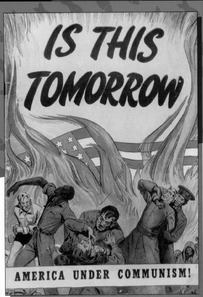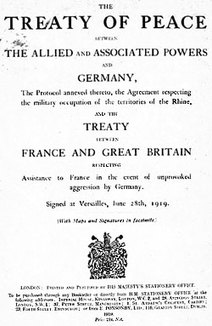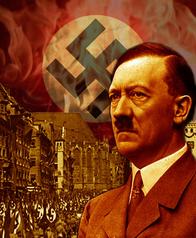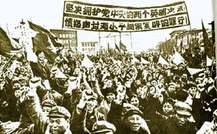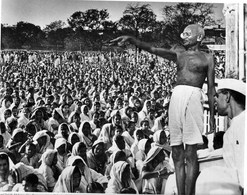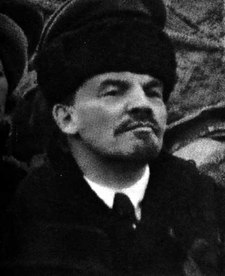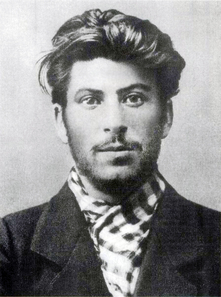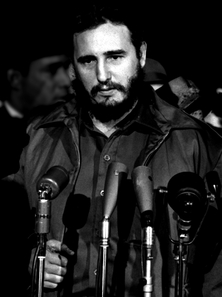The Basic Gist
Lauren Ellsworth and Sarah Babbie
G. The cause and effects of the change in standard economic policies from the turn of the 19th century through the modern era.
Time Frame
The periods of time that we are looking at start around 1900 ("the turn of the 19th Century") up until Modern Times. This would include industrialization, a global market forming, the rise and fall of communism, global economic recessions and wars, reaching all the way to times like today with highly commercialized and complex markets.
Where exactly?
The United States became a super power. In the early 1900s, the US was focused intensely on internal affairs.
Europe, in the 20th century, is most remembered for the rise and fall of communism as well as depressions that changed political systems and caused the World Wars.
Asia, China and Japan most notably, changed from old ways to new, China experiencing communist rule and Japan emerging from United States industrial influence aggressive to expand.
Important to note is how the world as a whole began to interact economically. There are key regions, but for the first time in history especially after World War I and World War II, nations interacted beyond simply trading with one another. Technically, the first global market emerged with silver. What is different in this era is institutions such as the World Bank, UN, and other organizations that linked the world together even more. Also, economically countries became concerned with one another. For example, the United States involved itself in the affairs of Europe and Asia on behalf of fighting communism, an economic and political system. Also, the economies of the world were shown to be linked, evidence of this being the Great Depression. If Europe struggles, the world struggles. If the U.S. struggles, the world struggles. Nations are interdependent on one another.
Europe, in the 20th century, is most remembered for the rise and fall of communism as well as depressions that changed political systems and caused the World Wars.
Asia, China and Japan most notably, changed from old ways to new, China experiencing communist rule and Japan emerging from United States industrial influence aggressive to expand.
Important to note is how the world as a whole began to interact economically. There are key regions, but for the first time in history especially after World War I and World War II, nations interacted beyond simply trading with one another. Technically, the first global market emerged with silver. What is different in this era is institutions such as the World Bank, UN, and other organizations that linked the world together even more. Also, economically countries became concerned with one another. For example, the United States involved itself in the affairs of Europe and Asia on behalf of fighting communism, an economic and political system. Also, the economies of the world were shown to be linked, evidence of this being the Great Depression. If Europe struggles, the world struggles. If the U.S. struggles, the world struggles. Nations are interdependent on one another.
What happened and why?
Global Conflict PeriodThe two world wars greatly impacted Economic Policy worldwide in the fact that things truly had to be handled worldwide. World War I made it very clear that things had to be handled on a much large scale, hence Wilson’s 14 point plan which involved creating a League of Nations to handle things like this to prevent global issues by making international treaties and tearing down territorial trading, such as one nation claiming part of the ocean and charging to pass through it. However, much of this was not passed and the winners of WWI just put the entire charge of the war onto Germany and left it at that. The League of Nations was created and eventually became the UN, which deals a lot with policy and dealing with things. After this, the global economy collapsed from a mixture of things. Every nation was affected by it in some ways, Germany was hit very hard where bread would cost a wheelbarrow of money or in America where unemployment was very high up. This relates to the fact that the entire globe was effected by the same thing, continuing the idea that everything was much more globalized in terms of policy than before.
This directly leads to WWII where Germany was retaliating at all of the nations it felt had hurt it’s economic prosperity from before. After this, the whole idea of the worldwide policy making was much greater. WWI can be seen as a cause to The Great Depression and WWII, but the major effect of all three of these is the creation of worldwide organizations such as the UN and the World Bank who deal with global economics and furthering globalization. Communism and Capitalism |
Communism and Capitalism is the most economically relevant topic that is typically thought of when it comes to this time period. This one is more on a national scale than an international scale, however. Communism is the economic system in which everyone is equal that is based off of Marxism, except in Communism there is a main leader rather than being led by the workforce as a whole. People are motivated by the idea of bettering their nation as a whole, and thus, in the long run, bettering their own lives.
Capitalism is the system with which everyone is not equal and there are different levels of wealthiness that can be ascended to, hence ideas such as the American dream. People are self motivated and work for the goals of having more things. The reason these were relevant to the topic is because a country that was Communist would typically not trade with a nation that was Capitalist because of the feud these differing forms of government had. (As seen in the propaganda picture to the left.) The people involved hated one another, leading to the cold war, where America basically put all of their money into military, like Russia, which led to both of them staying as forerunners via competition. Another reason these were relevant was that communism was a completely new economic policy that made people either much more motivated in some places, like Cuba, and much less motivated in some places, like Soviet Russia in the 1950s. This was a change in how things worked in these countries. |
RevolutionsWhat really marks this time period is that all of these reforms such as Communism taking over were caused by a revolution. Some were just that forward, people would rally and be violent in order to get what they wanted, which almost always was equality economically.
Another thing that was demanded was social equality, such as what Gandhi, Mandela, and Martin Luther King Jr. pushed, but all of them pushed in a nonviolent way. This led to a more equal workforce, but through things such as work strikes in many places where the minorities would not work for days. This slowed economic growth in some places. But, after all of the reforms happened, there was a mini boom caused by the motivation workers suddenly had and the pride they gained from their movements. |
Significant People
Some significant individuals who took part in changing the economies of the time are known for innovation, instigation, and for being revolutionaries. Some people fit into more than one category; here, they have been split into Communists and other important figures.
Communists
|
Vladimir Lenin was an instigator sent in by Germany in order to break apart Russia from the core, this makes him one of the major people because he would give speeches to the poor and to the unfairly treated. He played off of the pain that the people felt in this region and created a feeling of animosity toward the government. Because of this, Russia had a very brutal uprising of the lower class leading to the removal of the Czar and the introduction of a Socialist system that eventually turned into communism. The inspiration to create goods came from the idea of bettering the nation, rather than through personal gain. Lenin was the cause of a major economic change in the world in this time partnered with Stalin in this region.
Joseph Stalin was the Head of The Communist Party of Soviet Russia from 1922-1952. This put him in a position of power over the economic goings on in Russia, including being a major part of it’s collapse later on due to the lack of inspiration workers had here. His influence was very similar to Lenin, but rather than an instigator, he became a leader. He transformed Russia from a simpler place into a World Superpower with very high human costs, but at the same time, he turned the nation around from what it was and helped rebuild it after the Communist Revolution, which did not help in the economics department. This led to tension which impacted the global economic policies, including Russia not trading with any Capitalist Nation. The same was done by the Capitalists, but it still is a major change in policy that is somewhat held today.
Similar revolutions were led in China and Cuba which turned them into similar states under the leadership of different people with different effects. In Cuba, the revolution was led by Fidel Castro, a man who felt the current leadership was also corrupt. Castro was arrested a few times, but still stood for his cause and after the revolution completely took charge. Under his leadership everyone was put on an equal standing, regardless of job or gender. Women joined the working class here which hyped up production despite everyone being equal.
China also had a revolution similar to these three countries, except that was on a larger scale and is referred to as the Chinese Civil War. The important figure to recognize here from the Communist Party who influenced economic policy is Mao Zedong (not pictured). Here fighting happened starting in 1937 and continued until the 1950s, from this emerged a different kind of communism. It’s kind of interesting because it’s more like a dictatorship with free trade than communism as it is typically seen, but this is a major change in how the economic systems work worldwide. Because of the free trade in China, we can see China as a hub of trade worldwide. The ideas behind this came from a military leader in the Chinese Civil War, Mao Zedong, which makes him a cause of economic change during the time. |
Other Significant Figures
|
The next two individuals can also be seen as instigators. Gandhi and Mandela both sparked revolution without resorting to drastic change in their entire nations, they created revolution through nonviolence. This may not seem like it would affect economic policy, but it did take the racial factor out for Mandela and for Gandhi, it made British Raj nonexistent. Gandhi encouraged something called Satyagraha which boils down to the idea of actively protesting in a nonviolent manner. This helped India become a more independent player in worldwide economics as well as helping them move to the forefront as well. With Mandela, it broke up racial classification of workers and made the working class less divided by race and more by skill, which allows for different kinds of labor and more advanced things to be done because everyone gets a chance to show what they can accomplish. These figures were also a cause.
Hitler is another relevant figure, but more in terms of an effect. Germany was ravaged by the combo of The Great Depression as well as the aftermath of WWI. Due to their reparation debts, living became an incredibly costly thing to do. Hitler rose up and took advantage of this and made himself leader, leading to WWII. This reflects how the economic policies changed from a country-wide thing to a worldwide thing, such as with the Treaty of Versailles bankrupting Germany. Another figure who was relevant was Woodrow Wilson who came up with the 14 point plan which was a list of things that needed to be done after WWI. This included the idea of the League of Nations which was the original jumping off point for the UN as well as helping in creating the Treaty of Versailles which placed the blame of WWI on Germany. Lastly are the figures who were helpful, but were not necessarily leaders such as Henry Ford who created the assembly line which allowed for things to move much quicker in production. More things could be made more quickly, specifically cars, but this process helps in economic growth because the country with the most ability to produce will be the top dog in world economics. The idea of Capitalism flourished with the help of this invention Another one was Carnegie who showed that Capitalism directly led to social mobility by going from a nobody to the one of the richest men in the world. This helped fueling the idea of the American Dream which drew immigrants and helped America's Economy for a long while. |

